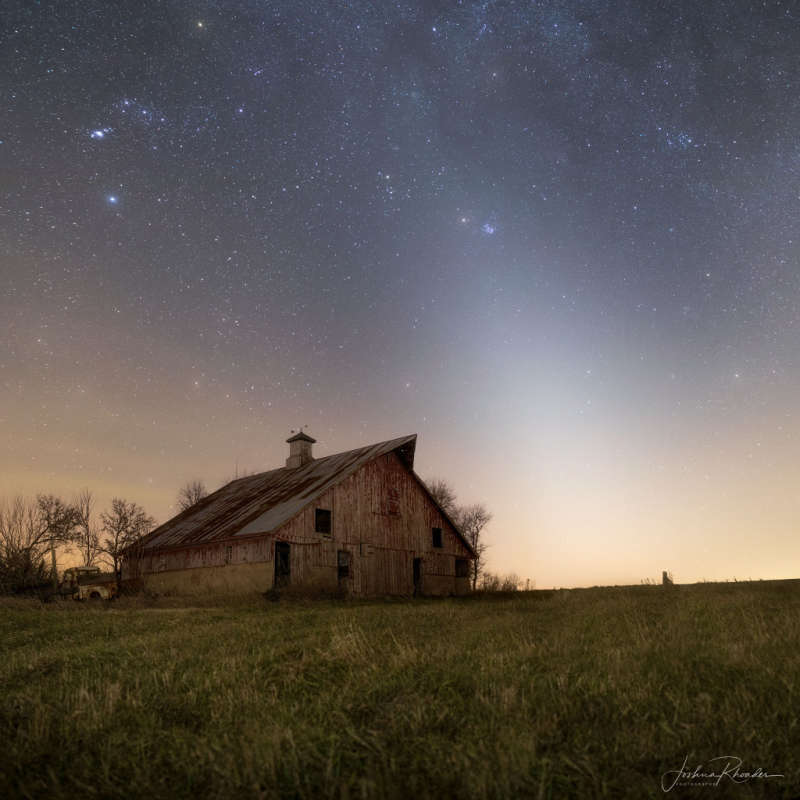Credit & Copyright: Joshua Rhoades
Explanation:
Just after sunset on March 7, a faint band of light still
reaches above the western horizon in this serene,
rural
Illinois, night skyscape.
Taken from an old farmstead, the luminous glow is zodiacal light,
prominent in the west after sunset during planet Earth's
northern hemisphere spring.
On that clear evening the band of zodiacal light seems
to engulf bright yellowish Mars and the Pleiades star cluster.
Their close conjunction is
in the starry sky above the old barn's roof.
Zodiacal light is sunlight scattered by interplanetary dust particles
that lie near the Solar System's ecliptic plane.
Of course all the Solar System's planets orbit near the
plane of the ecliptic,
within the band of zodiacal light.
But zodiacal light and Mars may have a deeper connection.
A recent
analysis
of
serendipitous
detections of interplanetary dust
by the Juno spacecraft during its Earth to
Jupiter voyage
suggest Mars is the likely source of the dust that produces zodiacal light.
1999 2000 2001 2002 2003 2004 2005 2006 2007 2008 2009 2010 2011 2012 2013 2014 2015 2016 2017 2018 2019 2020 2021 2022 2023 2024 2025 |
Yanvar' Fevral' Mart Aprel' Mai Iyun' Iyul' Avgust Sentyabr' Oktyabr' Noyabr' Dekabr' |
NASA Web Site Statements, Warnings, and Disclaimers
NASA Official: Jay Norris. Specific rights apply.
A service of: LHEA at NASA / GSFC
& Michigan Tech. U.
|
Publikacii s klyuchevymi slovami:
zodiacal light - Mars - Mars - zodiakal'nyi svet
Publikacii so slovami: zodiacal light - Mars - Mars - zodiakal'nyi svet | |
Sm. takzhe:
Vse publikacii na tu zhe temu >> | |
